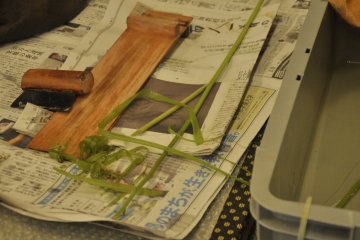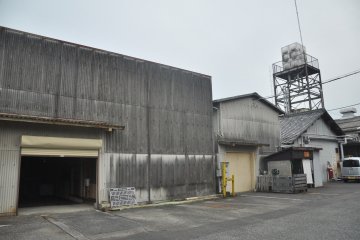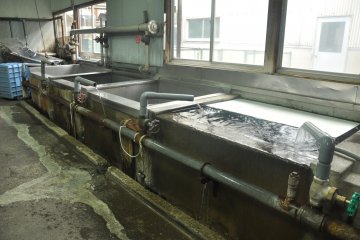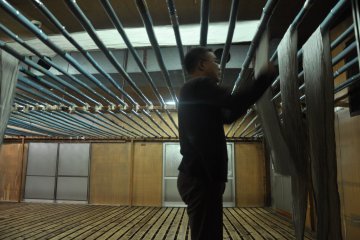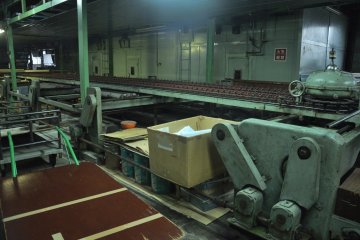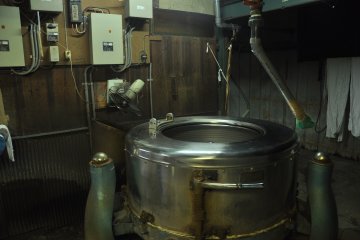This textile factory in Notogawa is responsible for the further processing of traditional linen after a piece of cloth is initially woven and dyed. For years this factory has been cooperating with Omi-jofu traditional crafts center, the only linen shop in the local region still using traditional production methods. Thanks to this partnership, the factory currently performs the final step of textile production using both traditional and modernized methods.
The first step in the process requires wrinkling the cloth. Often, garments are purposely wrinkled so as not to stick to the skin during hot weather, a very clever design feature from the past. To make these wrinkles, the cloth is first wet and put on a green board made with small hollow squares. It is then rubbed by hand to create the rough surface of the cloth. Afterwards, it is rubbed against a special wooden board, also produced in the factory, made with smaller squares to create more intricate wrinkles. Chemicals are later applied to help maintain the wrinkles before the cloth is dried.
The traditional way of drying involves the use of both simple machines and manual labor, while in modern days, the same process is completed entirely by machines. With the traditional method, the cloth is first hung on bamboo bars below the ceiling of a large room, in which the elevated floor is a large wooden rack. The room is subsequently sealed off and steam is piped in for a short while to soften the garment. Afterwards, cold air is circulated in the room, running beneath the floor rack and above the cloth. The drying process takes around 30 minutes
On the other hand, the modern method uses only one huge machine. After the wrinkle-hold chemical is applied to the cloth, the cloth itself is threaded into the machine from the top. The belt inside forces the cloth to snake through the machine from top to bottom, each time running through the whole length of the machine, approximately 10 meters. Finally the dried cloth is ejected from the other end and is loosely folded as it comes out. With this modern method, drying is achieved in only three minutes.
Some of the cloth needs to be stretched, which is done by another machine next to the drying machine. Occasionally they can be stretched as much as 15cm from 145cm to 160 cm, in order to make the surface of the cloth more uniform in nature.
This factory is now the remaining factory who still utilizes traditional methods in their productions. This requires more man-power and heightens the production costs, which results in higher selling price. However, some may argue that it's impossible to put a price on the preservation of such an important local heritage.



